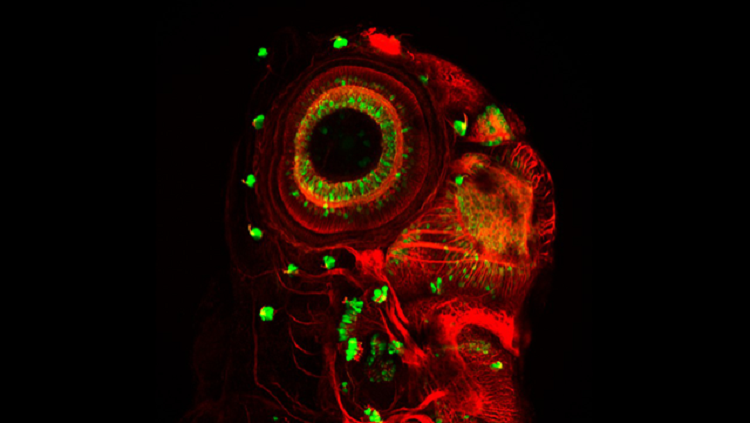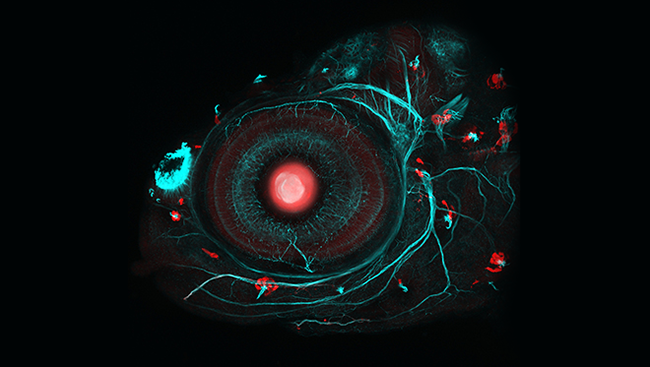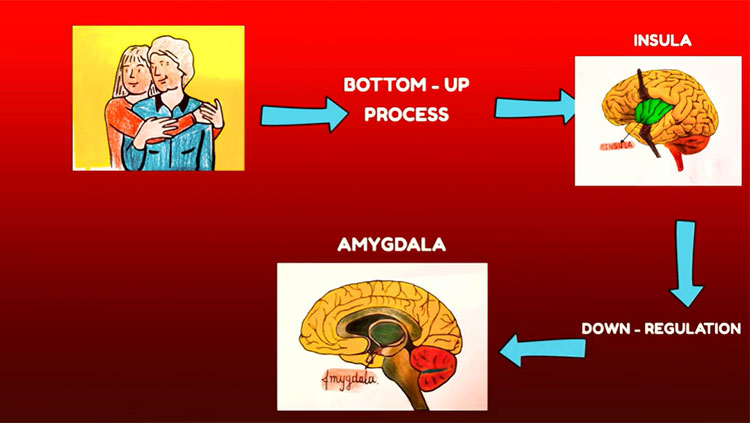The Feeling of Water
- Published12 Jul 2018
- Reviewed12 Jul 2018
- Author
- Source BrainFacts/SfN

Fish have a sixth sense when it comes to water, thanks to the cells labeled green in this 4-day old zebrafish. Known as neuromasts, these cells belong to the same category of sensors as those that give us the sensation of touch. When flowing water pushes down little hairs between scales, the cells below fire off electrical signals to the brain, letting the fish sense currents and ripples in its surroundings.
But for fish the sense goes beyond feeling just what flows directly over their scales. The water’s motion tells them enough that they can guess at the movement of nearby objects too, helping them form schools and evade predators. The sense’s fine detail allows it to supplement, and in extreme cases replace, the need to see. Temporarily blindfolded fish can still group up, thanks to these cells, and permanently blind cavefish feature supersized, extra sensitive versions.
CONTENT PROVIDED BY
BrainFacts/SfN
What to Read Next
Also In Touch
Trending
Popular articles on BrainFacts.org


















